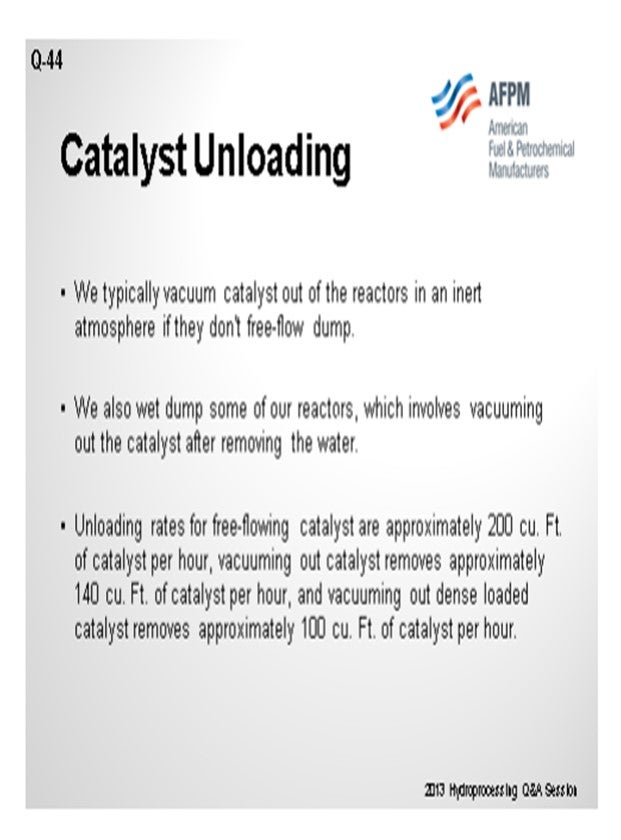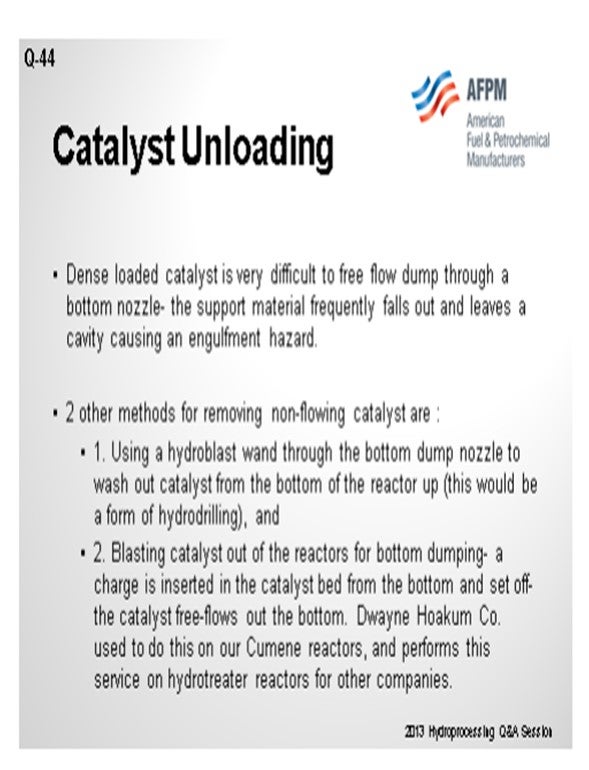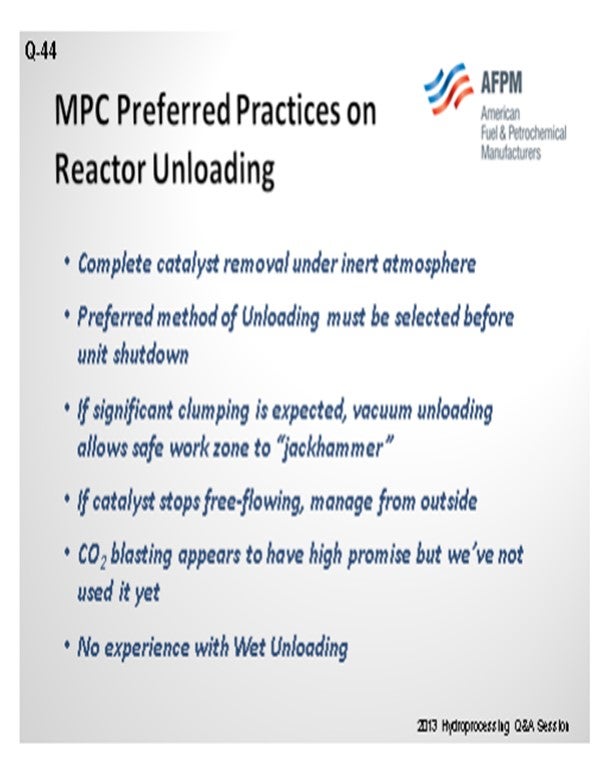Question 44: What are refiner’s practices or procedures to remove catalyst from a reactor when the catalyst will not free flow dump? What is the industry's experience with hydro drilling for removal of non-free-flow catalyst from fixed-bed units?
SHARPE (Flint Hills Resources, LP)
We typically vacuum out catalyst in an inert atmosphere if the reactors do not free-flow dump. We also wet-dump some of our reactors, which involves vacuuming out the catalyst after removing the water. For people who are involved in turnaround planning, unloading rates for free-flowing catalyst are approximately 200 cubic feet of catalyst per hour. Vacuuming out catalyst removes about 140 cubic feet of catalyst per hour, but it does not slow the catalyst. It removes about 100 cubic feet per hour.

It is pretty difficult to unload free flow dumping through a bottom nozzle. The support material will fall out first, leaving a cavity which can cause an engulfment hazard; so that is not recommended. Another method for removing non-flowing catalyst is using the hydroblast wand through the bottom dump level to wash catalyst out from the bottom of the reactor. This would be a form of hydro drilling. The other method some people have used is blasting catalyst out of the reactors for bottom-dumping using explosive charges. Charges are inserted in the catalyst bed and set off; catalyst then free-flows out of the bottom-dump nozzles. The Dwayne Hoakum Company is still around, as well as other companies. This company used to do this on our Cumene reactors, and they also perform a service on hydrotreater reactors for other companies.

VICHAILAK (Marathon Petroleum Corporation)
At Marathon, we prefer catalyst removal under an inert atmosphere. As long as there is catalyst in the reactor, the atmosphere will stay inert. We prefer to select the method for removing catalyst before we shut down. If that reactor has a history of not being able to free-flow or do a gravity dump, then we plan for unloading with vacuum beforehand. If significant clumping is expected, I have seen catalyst handlers go down with a jackhammer to get the catalyst out one layer at a time. If we decide to do gravity dump and catalyst stops free-flowing, we will not allow anyone to go into the reactor, period. So in that situation, all operations will be managed from outside. Lately you have heard about CO2 (carbon dioxide) blasting having good promise, but we have not used it yet. We have never done hydrodrillings or experienced any wet loading so far.
